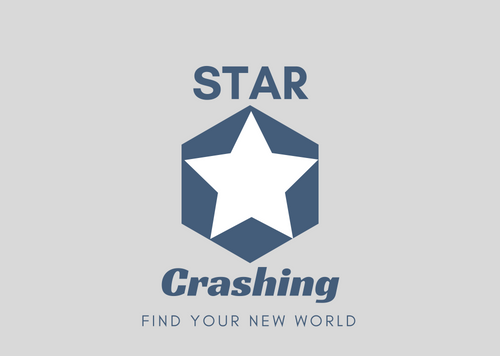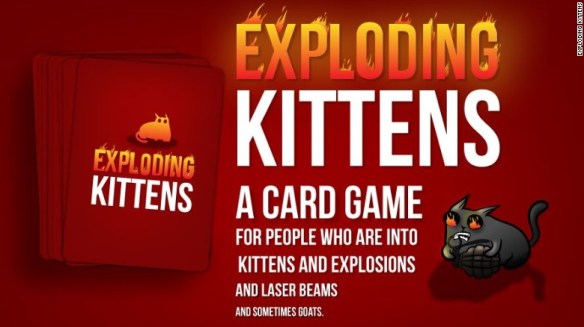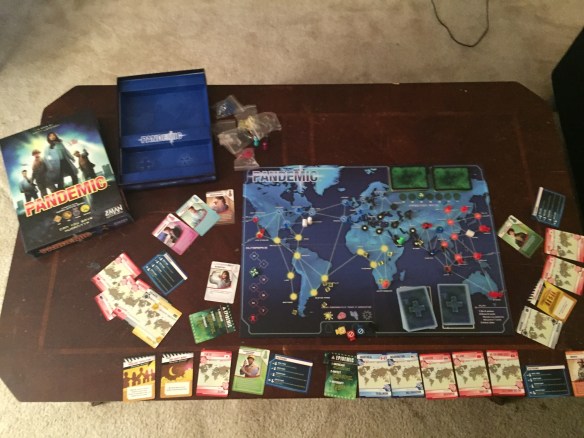There are two essential groups when it comes to creating a popular board game; designers and publishers. The designer comes up with the concept and fleshes it out into a board game. The publisher brings that idea to life and produces it/distributes it to the masses. Both groups need each other and form a symbiotic relationship, and when a game succeeds it is due to the hard work of the person who created the game and the company that gave it a chance. Because of how important these two groups are, I thought it would be a good idea to highlight some of the best designers and publishers currently in the market today.
Now, there are hundreds of board game publishers and even more designers, so this will by no means be a comprehensive list. These are just a list of some of my favorite designers/publishers currently working in the board game space. Let’s start with Publishers; my top 5 publishers in alphabetical order are below.
Days of Wonder

- Best Known Game: Ticket to Ride
- Other Popular Games: Memoir ’44, Five Tribes, Small World
- My Favorite Game: Ticket to Ride
“Days of Wonder® develops and publishes games that Play different.™ From its insistence on releasing only a very limited number of new games, to its uncompromising board game production values and unique in-house digital development team, Days of Wonder consistently raises the bar with an unmatched string of hits that includes Ticket to Ride®, the world’s best-selling train game; Small World®, the legendary fantasy game of epic conquests; and Memoir ’44®, the World War II saga with 20 expansions to its credit.”-Days of Wonder About Us
Founded in 2002, Days of Wonder currently holds the record for the youngest gaming company to have a game that won the Spiel de Jahres Game of the Year award (Ticket to Ride, 2004). Their list of games is smaller than most because they focus on creating and selling high-quality products rather then mass distribution. They have also begun to dabble in online gaming, with new game apps and Steam games becoming available via their website. One of the better board game companies that might not have as large a collection as others on this list, provides entertaining and clever games across the board (pun intended).
Hasbro
- Best Known Game: Monopoly
- Other Popular Games: Twister, Jenga, Risk
- My Favorite Game: Tie (Monopoly and Risk)
“Hasbro is a global company committed to Creating the World’s Best Play Experiences, by leveraging its beloved brands, including Littlest Pet Shop, Magic: The Gathering, Monopoly, My Little Pony, Nerf, Play-Doh and Transformers and premier partner brands. From toys and games to television programming, motion pictures, digital gaming and a comprehensive lifestyle licensing program, Hasbro fulfills the fundamental need for play and connection for children and families around the world. “- Hasbro Corporate Statement
Hasbro is the board game publisher that most people will know about. Hasbro is one of the largest game companies currently in existence; you can find their games pretty much everywhere. Most of the classic popular board games come from this company, such as Monopoly, Risk, etc. While board games are not the only thing Hasbro does, the tabletop industry will always be a large part of their portfolio. Currently the company’s major success with games is in selling their large collection of popular games to new generations.
Iello Games
- Best Known Game: King of Tokyo/King of New York
- Other Popular Games: King of New York, Dungeon Fighter, Heroes of Normandie
- My Favorite Game: King of Tokyo
“We specialize in games that are rich with graphics, beautiful in design, and innovative in game play. We are now a premier publisher and worldwide distributor in a fast-expanding industry. In 2012, we solidified our position by creating a U.S. division to better service the American market. This, coupled with the release of Richard Garfield’s best-selling and award-winning game King of Tokyo in 2011, put us in the forefront of international game companies.”- IELLO About Us
One of the newer board games publishers in the industry, Iello started off as a Distributor but changed course to become a publisher back in 2008. Located in France, they have become a popular publisher in America through some of their premier board game titles. Most well-known for the game series King of Tokyo, they are one of the up-and-coming game companies as they continue to expand. Their board games are all very aesthetic, with some of the best board game artwork in the last few decades of board game development.
Mayfair Games
- Best Known Game: Settlers of Catan
- Other Popular Games: World Without End, King Chocolate, Extra! Extra!
- My Favorite Game: Settlers of Catan: Seafarer’s Expansion
“Mayfair Games is a U.S. based Illinois company, incorporated in 1981 and is an international publisher of board games and card games suitable for families and hobbyists. Mayfair Games has over 100 game titles in print including many long-running series of games such as Empire Builder™ and The Settlers of Catan™ as well as many long-running standalone titles such as Alibi™ and Family Business™. Mayfair Games, making the ‘games of our generation’.”- About Mayfair Games
It’s impossible to create a list of influential board game publishers without mentioning the company that brought us Settlers of Catan. Mayfair Games focuses on bringing European-style games to the American market, and provides numerous different types of games with over 100 games and expansions in distribution. Creating the many expansions of Settler of Catan and other popular games has also ensured Mayfair stays relevant in an ever-changing industry.
Z-Man Games
- Best Known Game: Carcassonne
- Other Popular Games: Pandemic, Shadowfist, Tales of the Arabian Nights
- My Favorite Game: Pandemic
“Z-Man Games, Inc. is a game publisher. New Yorker Zev Shlasinger created the company in 1999 for the sole purpose of bringing back Shadowfist, one of the best multiplayer Collectable Card Games ever made. With the success of Shadowfist, Z-Man Games published its first B-Movie card game, Grave Robbers from Outer Space, and from that point on Z-Man Games decided to continue making fun, innovative games. Since that time we have published over 100 games including award-winning games, such as Agricola, Pandemic, and Merchants & Marauders – to name a few.”- Z-Man Games About Us
Z-Man games found success by taking lesser-known games and expanding them into the gamer community, along with creating a wide variety of different games for purchase. Carcassonne, while not being the most well-known game in comparison to Monopoly or Settlers of Catan, is critically acclaimed to be one of the best board games currently in production. Many of their games have won awards and have gone on to become very popular in America as well as internationally.
If there are any other publishers you think deserve to be on this list, comment on this post to let me know!
 of the fruit-based games created by Rena and Abe Nathanson, Bananagrams focuses on quick real-time action where you work to use up all of your tiles and create a makeshift Scrabble “grid”. You start with 21 tiles and once you use them all, you yell, “Peel” and everyone has to take one more tile. The process continues until there are no tiles left, and then the person to use up his or her last tiles wins… assuming he or she spelled every word correctly. If there are misspelled words, that player is disqualified and all other players resume play until someone else finishes.
of the fruit-based games created by Rena and Abe Nathanson, Bananagrams focuses on quick real-time action where you work to use up all of your tiles and create a makeshift Scrabble “grid”. You start with 21 tiles and once you use them all, you yell, “Peel” and everyone has to take one more tile. The process continues until there are no tiles left, and then the person to use up his or her last tiles wins… assuming he or she spelled every word correctly. If there are misspelled words, that player is disqualified and all other players resume play until someone else finishes. ence. There’s also not as much of an advantage of playing large and complex words, though more words means less extra tiles and an easier time playing off of them in your connected grid. Being able to play two-letter words is just as important as playing seven-letter words. Speed is the priority, and the ability to change your grid when necessary to accommodate the new tiles you draw.
ence. There’s also not as much of an advantage of playing large and complex words, though more words means less extra tiles and an easier time playing off of them in your connected grid. Being able to play two-letter words is just as important as playing seven-letter words. Speed is the priority, and the ability to change your grid when necessary to accommodate the new tiles you draw. er you do at the beginning of the game, the easier it is to stay in the lead since you only have one tile to work with. This challenges your opponents to use an ever-increasing set of tiles while you work to grow your lead. Finally, he variety of each game is also a plus because there are plenty of tiles and you will always draw different combinations and have to use different words.
er you do at the beginning of the game, the easier it is to stay in the lead since you only have one tile to work with. This challenges your opponents to use an ever-increasing set of tiles while you work to grow your lead. Finally, he variety of each game is also a plus because there are plenty of tiles and you will always draw different combinations and have to use different words.

























